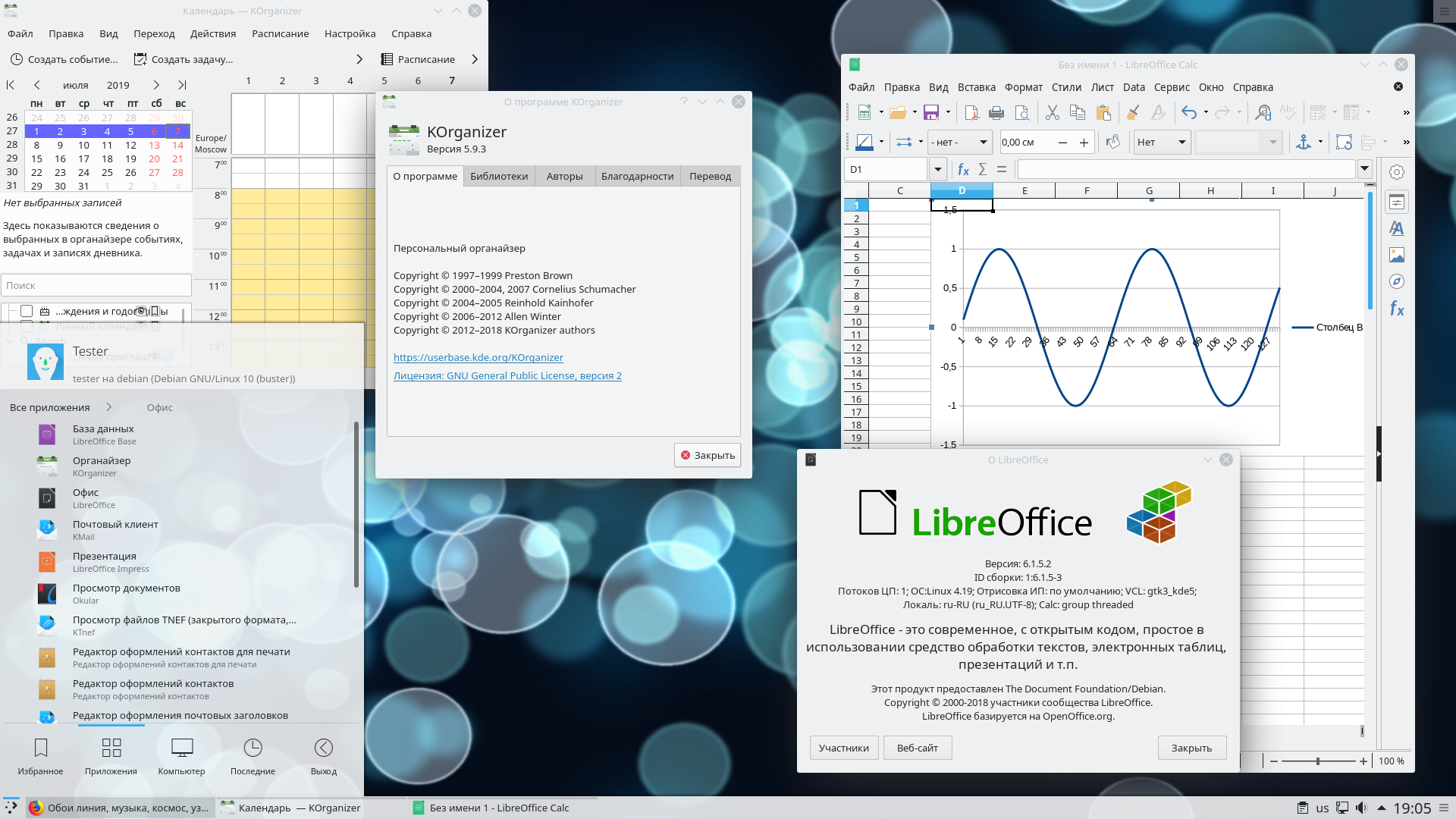Kano OS - the Operating System. Kano OS is actually a Raspbian image but with an interface. TorBirdy also supports Enigmail, which we'll get to in a moment. Enigmail is a security extension for Thunderbird that uses OpenPGP to encrypt and digitally sign your. TorBirdy は、Microsoft Windows、macOS、Linuxの各環境で動作するインターネット統合ソフト・SeaMonkeyおよび電子メールクライアント・Mozilla Thunderbird用の拡張機能。.
Thunderbird is a popular free email client developed by Mozilla. Similar to Firefox, Thunderbird offers a large choice of add-ons for extra features and customization. This article focuses on four add-ons to improve your privacy.
Am einfachsten konfiguriert man das Profil anonym, indem man das Add-on TorBirdy installiert. Am einfachsten installiert man TorBirdy mit dem Add-on Manager von Thunderbird unter Extras - Add-ons. Im Suchfeld gibt man TorBirdy ein. Ein Klick auf den Button Installieren holt das Add-on. Nach der Installation muss Thunderbird neu gestartet werden.
Enigmail
Encrypting emails using GPG (GNU Privacy Guard) is the best way to keep their contents private. If you aren’t familiar with GPG, check out our primer right here on the Magazine.
Enigmail is the go-to add-on for using OpenPGP with Thunderbird. Indeed, Enigmail integrates well with Thunderbird, and lets you encrypt, decrypt, and digitally sign and verify emails.
Paranoia
Paranoia gives you access to critical information about your incoming emails. An emoticon shows the encryption state between servers an email traveled through before reaching your inbox.
A yellow, happy emoticon tells you all connections were encrypted. A blue, sad emoticon means one connection was not encrypted. Finally, a red, scared emoticon shows on more than one connection the message wasn’t encrypted.
More details about these connections are available, so you can check which servers were used to deliver the email.
Sensitivity Header
Sensitivity Header is a simple add-on that lets you select the privacy level of an outgoing email. Using the option menu, you can select a sensitivity: Normal, Personal, Private and Confidential.
Adding this header doesn’t add extra security to email. However, some email clients or mail transport/user agents (MTA/MUA) can use this header to process the message differently based on the sensitivity.
Note that this add-on is marked as experimental by its developers.
TorBirdy
If you’re really concerned about your privacy, TorBirdy is the add-on for you. It configures Thunderbird to use the Tor network.
TorBirdy offers less privacy on email accounts that have been used without Tor before, as noted in the documentation.
Please bear in mind that email accounts that have been used without Tor before offer less privacy/anonymity/weaker pseudonyms than email accounts that have always been accessed with Tor. But nevertheless, TorBirdy is still useful for existing accounts or real-name email addresses. For example, if you are looking for location anonymity — you travel a lot and don’t want to disclose all your locations by sending emails — TorBirdy works wonderfully!
Note that to use this add-on, you must have Tor installed on your system.
Photo by Braydon Anderson on Unsplash.
TorBox is an easy to use, anonymizing router based on a Raspberry Pi. TorBox creates a separate WiFi that routes the encrypted network data over the Tor network. The type of client (desktop, laptop, tablet, mobile, etc.) and operating system on the client don’t matter.
Torbirdy Update
Tor, on which TorBox is based, encrypts your network data from your client to the Tor exit node, overcomes censorship, and anonymizes your data stream. Commonly, Tor is used by the Tor Browser, which facilitates surfing the web or accessing hidden services (.onion – Websites). However, there are also other programs using Tor, like the Tor Messenger, TorBirdy (an extension for Mozilla Thunderbird) and OnionShare. Though wouldn’t it convenient to route all your data through the Tor network, independently from the client, the service, and the program be used?
TorBox accomplishes this by creating a separate WiFi and routing all network data over the Tor network. The TorBox image file, available here (about 1 GB), can be run on a low-priced Raspberry Pi.
TorBox can be connected to an Internet router through cable, but it can also be used in connection with another (unsecured) WiFi, even if it has a captive portal.
A word of warning!
Use it at your own risk!
TorBox is ideal for providing additional protection for the entire data stream up to the Tor network and for overcoming censorship. However, anonymity is hard to get – solely using Tor doesn’t guarantee it. Malware, Cookies, Java, Flash, Javascript, and more will most certainly compromise your anonymity. Even the people from the Tor Project themselves state that “Tor can’t solve all anonymity problems. It focuses only on protecting the transport of data.” Therefore, it is strongly advised not to use TorBox if your well-being depends on your anonymity. In such a situation, it is advisable to use Tails (read here, here and here why). Here are additional browser add-ons to improve anonymity, security, and/or usability.

Where to go from here?
Torbirdy Alternative
- Download the latest TorBox image file (TorBox v.0.4.0 based on Raspberry Pi OS “Buster” Lite with the Linux Kernel 5.10.17 and Tor version 0.4.5.7; about 1 GB) and verify the integrity of the downloaded file.
- Transfer the downloaded image file on an SD Card; for example, with Etcher. TorBox needs at least a 4 GB SD Card, but at least 8 GB are recommended.
- Put the SD Card into your Raspberry Pi, link it with an Internet router using an Ethernet cable, or place a USB WiFi adapter in one of the USB ports to use an already existing WiFi. Afterward, start the Raspberry Pi. During the start, the system on the SD card automatically expands over the entire free partition – user interaction, screen, and peripherals are not required.
- After 2-3 minutes, when the green LED stops to flicker, connect your client to the new WiFi “TorBox040” (password: CHANGE-IT). Then use an SSH-client to access 192.168.42.1 (username: torbox / password: CHANGE-IT). Now, you should see the TorBox main menu. Choose the preferred connection setup and change the default passwords as soon as possible (the associated entries are placed in the configuration sub-menu). For a connection via cable, see here.
A Raspberry Pi 3 (Model B / Model B+) or a Raspberry Pi 4 Model B is recommended.
Features
- TorBox routes all your network data through the Tor network. At the same time, TorBox acts as an external firewall and prevents IP leakage. If wanted, all HTTP plain traffic can be blocked additionally.
- With the SSH-accessible menu, TorBox provides you with a user-friendly interface.
- TorBox supports Internet access via cable (Ethernet), WiFi, tethering devices, cellular links, USB dongles (wlan1/eth1/ppp0/usb0), and and VPN connections (tun0).
- Clients can connect TorBox via WiFi (in most cases, an additional USB WiFi adapter is necessary) and cable (simultaneously; see here).
- It easily overcomes captive portals and offers, if necessary, measures against “disconnect when idle features” (sometimes seen with WiFis in airports, hotels, coffee houses).
- TorBox supports OBFS4, Meek-Azure and Snowflake bridges, which help to overcome censorship (with an easy to use interface).
- If you have a public IP address, 24/7 Internet connectivity over a long time, and a bandwidth of at least 1 Mbps, TorBox can provide a bridge relay, easily configurable via a user-friendly interface to allow censored users access to the open Internet.
- It provides SOCKS v5 proxy functionality on the ports 9050 (standard) and 9051 (with destination address stream isolation).
- It allows easy access to .onion websites without client configuration (Chrome) or via SOCKS v5 proxy (Firefox).
Alternative installation method with the TorBox installation script
Alternatively, you can download the latest version of Raspberry Pi OS Lite, ensure stable Internet connectivity, localize your installation with raspi-config (optional), download and execute our installation script:
We recommend running TorBox on a Raspberry Pi 3 (Model B / Model B+) or a Raspberry Pi 4 Model B under Raspberry Pi OS “Buster” Lite.
We offer also installation scripts for other systems, which might run on other hardware platforms. However, TorBox’s implementation on other systems and hardware is experimental because we do not have the resources to check all details on all different installations. You can help us to with reporting errors back to us.
Building from scratch
All you need to run TorBox on your Raspberry Pi is the image file. However, if you want to build it from scratch, whether you like to implement it to an existing system, to another hardware, respectively another operating system or you don’t trust an image file, which you didn’t bundle of your own, then check out our detailed manuals for a Raspberry Pi with Raspberry Pi OS Lite.
I want to help…

Torbirdy Thunderbird 68
GREAT! There is a lot to improve and to fix (security of the entire system, graphical menu, cool logos …). We are searching for people who want to help, and we need especially your feedback to improve the system. You can start to contribute to our GitHub page or contact us. You can also donate to the Tor Project — without them, TorBox would not exist.
